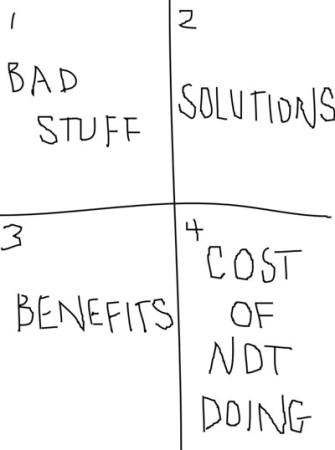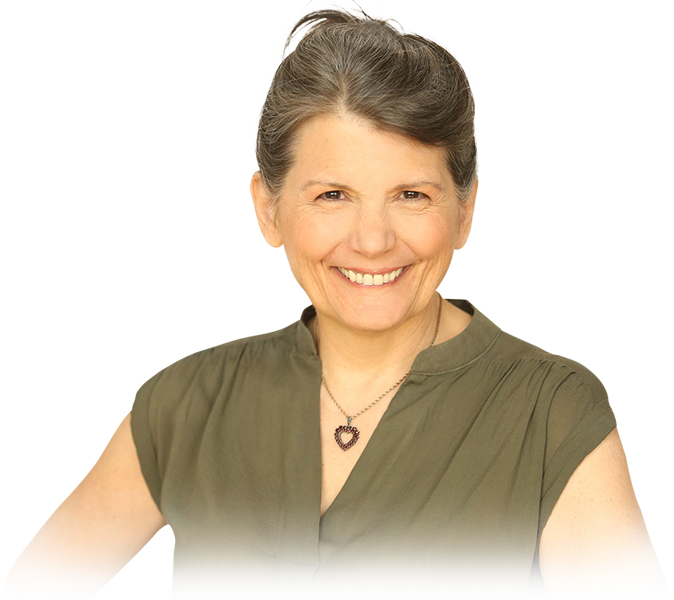Which would you pick?
Have you ever had a chat with yourself about staying in a situation that makes you unhappy, or leaving it so that you can find happiness? I’ve done it many times, and in the past, my heart would tell me to go for happiness… and then my head would remind me of the risk involved.
It’s not easy to jump into something when I don’t know how it will turn out. And apparently, I was never alone in feeling that way, because it turns out that given the choice between unhappiness and uncertainty, most people choose the certainty of unhappiness over the risk of going after what they really want.
These things, we already know…
The funny thing is, this is what we teach in our ATM and FI lessons — Just begin. Find out where you are, where you can go and what the choices are once you’re moving. Did you get what you expected? What you wanted? Well, try something different and see what happens. What feels easier, lighter, more enjoyable? Which way of doing it gets you closer to where you think you’re headed?
If only we could build our practices the way we live those 60 minutes on the floor when we listen to a recorded ATM! Well, I’m here to say that you CAN do it, and I know for sure, because I figured out how to do it.
And if I can do it, for sure YOU can do it!
Where to begin?
In his huge best-seller, The 4-Hour Workweek, Tim Ferriss suggests that the most important thing is to get over your fear of what could happen if you did something different. This is no small feat, but it’s not impossible, either. One of the things I’ve learned is that the consequences of taking the new action I’m unsure of are never as bad as I can imagine they will be…
What’s that little voice telling you?
Take 5 minutes and make a list of the things you know in your heart would change your practice for the better, if you just DID them. Be honest with yourself. This isn’t a test, and no one is going to read your answers. As Moshe would say, “If you cheat, you’re only cheating yourself.”
 Look at your Nightmares…
Look at your Nightmares…
the more the better!
Over the next days, give yourself 10-15 minutes every day to look at ONE of the things on your list.
Get quiet, and let your mind roam over this thing you know you should do. Let your worst fears about doing this thing rise to the surface, where you can see them and experience the feelings that come up when you think about these things happening to YOU. Let yourself see, hear, and feel what happens as those things emerge in your life. Keep asking yourself, “And then what would happen?” until you really arrive at that absolute worst thing imaginable that could result from your taking this particular jump into the unknown.
Take a fresh sheet of paper, and write the action at the top of the paper. Now divide the rest of the space into 4 boxes by making a line down the middle from top to bottom and from side to side. Number the boxes from 1-4.
 In Box 1, list in detail all the terrible things that you’re afraid will happen, the nasty emotions you’re scared you’ll feel, the demons that will come up to haunt you. Get out as many terrible consequences as you can find and write them down in all their horrific detail. Will they cause you or your family physical, emotional or psychological pain or damage? Think about how long these consequences will last… are they temporary consequences or permanent ones? How likely is it that these things would actually happen?
In Box 1, list in detail all the terrible things that you’re afraid will happen, the nasty emotions you’re scared you’ll feel, the demons that will come up to haunt you. Get out as many terrible consequences as you can find and write them down in all their horrific detail. Will they cause you or your family physical, emotional or psychological pain or damage? Think about how long these consequences will last… are they temporary consequences or permanent ones? How likely is it that these things would actually happen?
In Box 2, list all the solutions you can think of to deal with all these awful things that would befall you if you chose this path. What would be involved in those solutions? Time? Money? Energy? How much? Stretching yourself out of your comfort zone? How far? How capable are you of enacting those solutions? And how likely is it that you could mobilize yourself to do them, if you needed to?
In Box 3, write all the benefits you think this action could bring to you and your practice. What would having those benefits do for your life? How would your life and your relationships outside your practice be different if you made that change? How long would you have those benefits? How likely is it that these benefits would result from taking this action?
In Box 4, look at the cost of NOT doing this thing you fear. What will it mean a year from now, or five years from now? What if you never do it? How big a risk are you taking by staying where you are, doing the thing you know, and relying on that bad feeling you get to keep you within your comfort zone? Again, look at how likely it is that these costs will materialize in your future.
So, what more do you need to know?
You can run from FEAR, but it will always get there ahead of you!
Just turn around, look it in the eye and make your decision based on who you really are!


